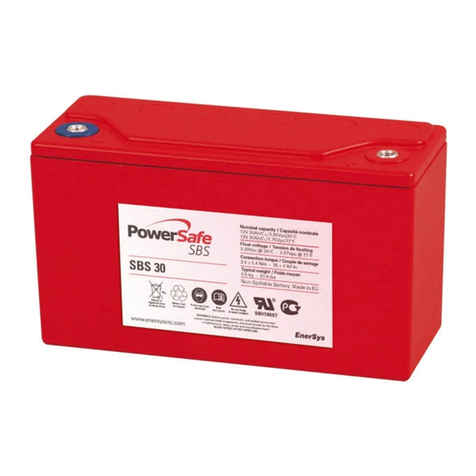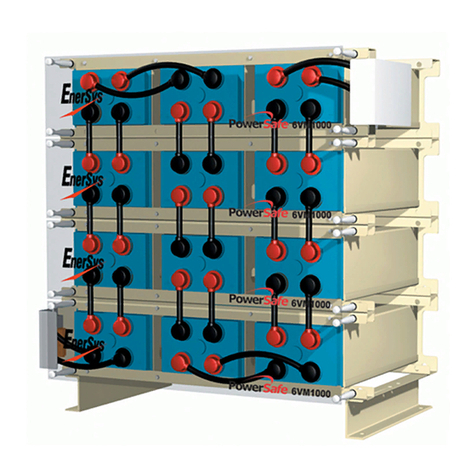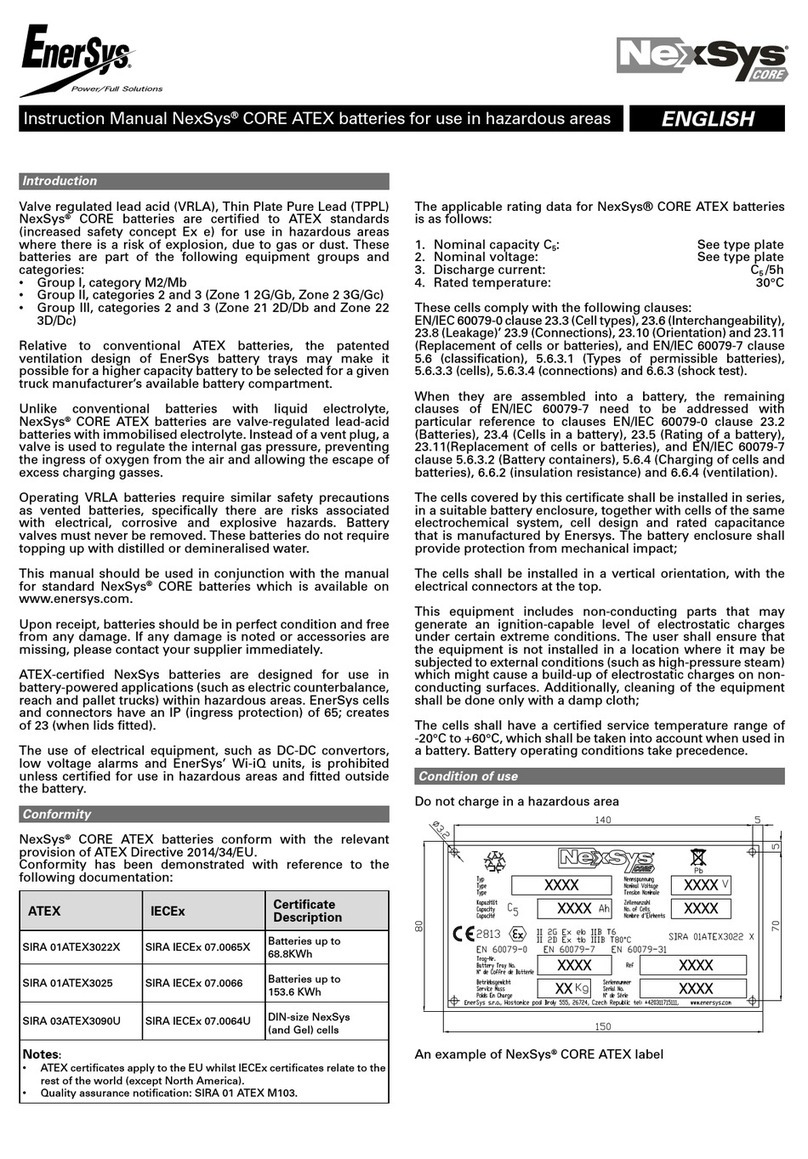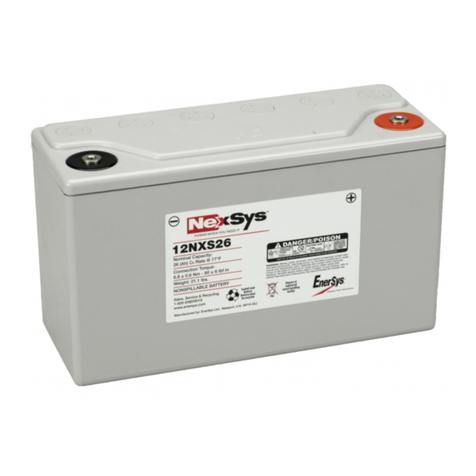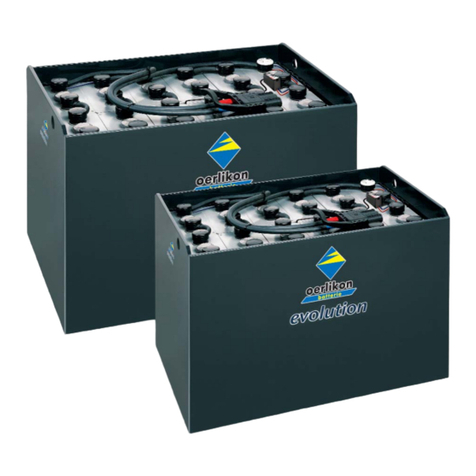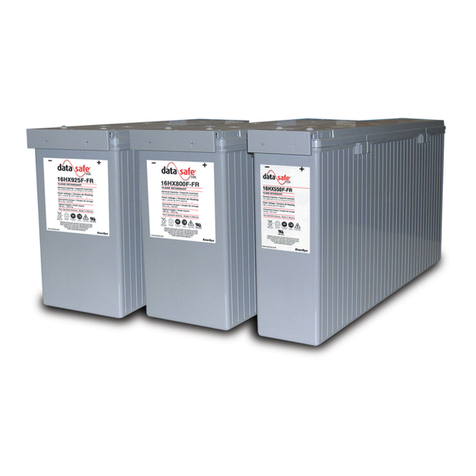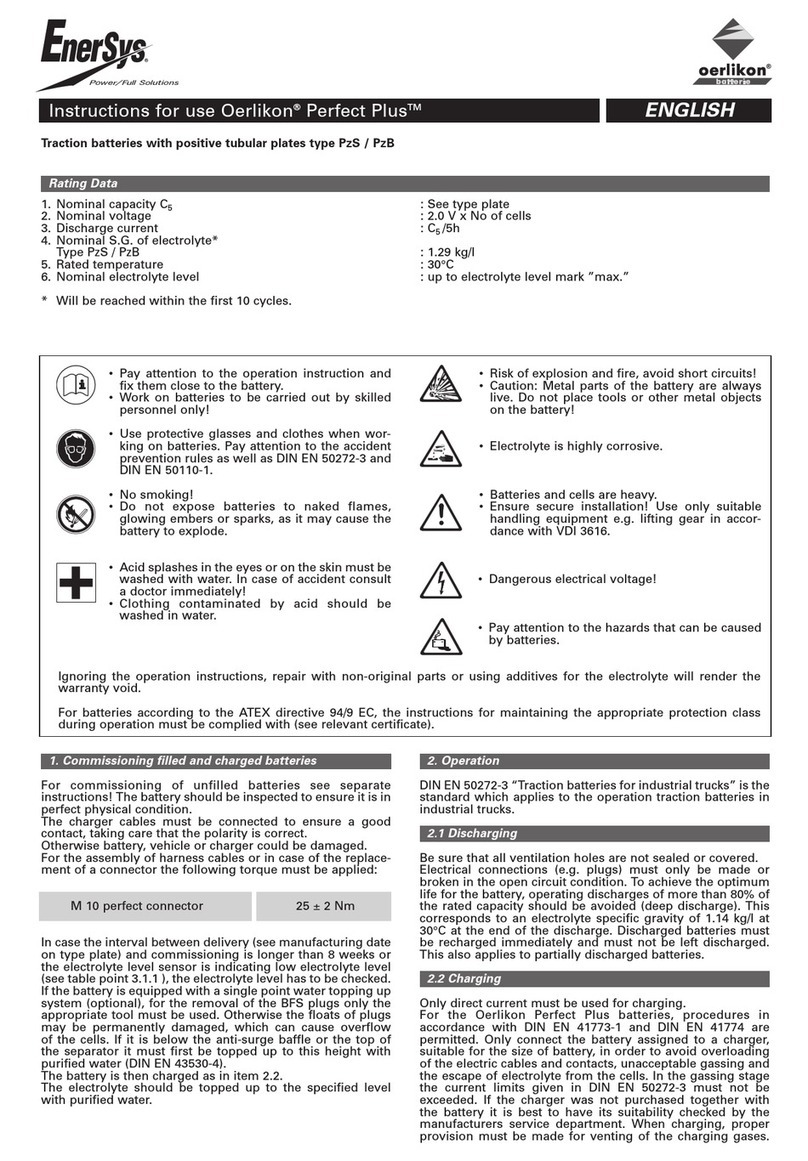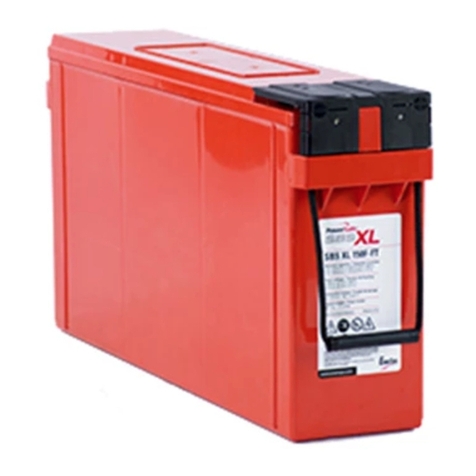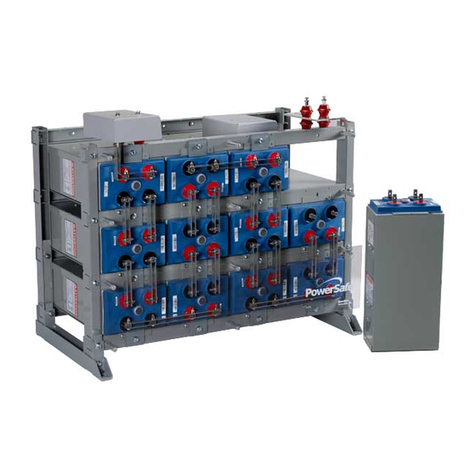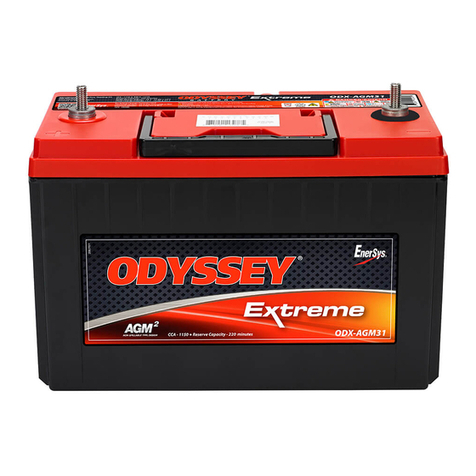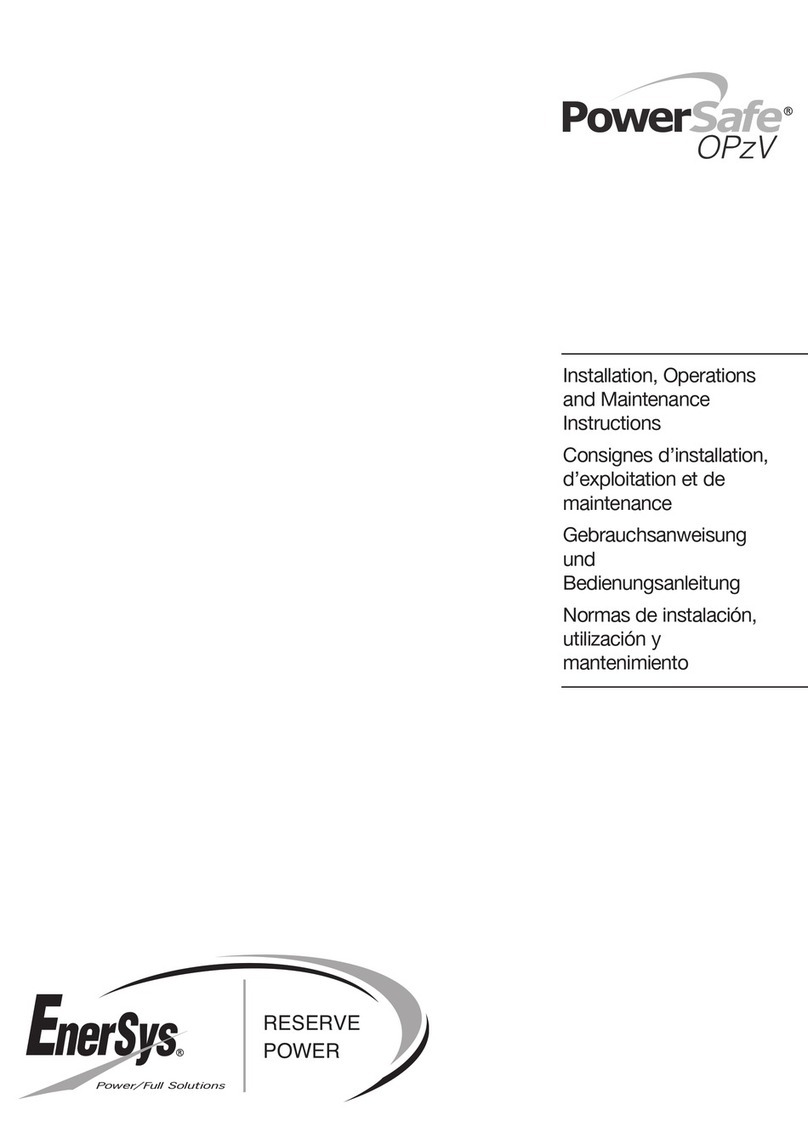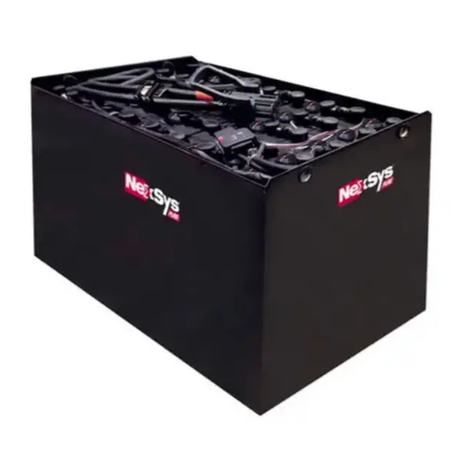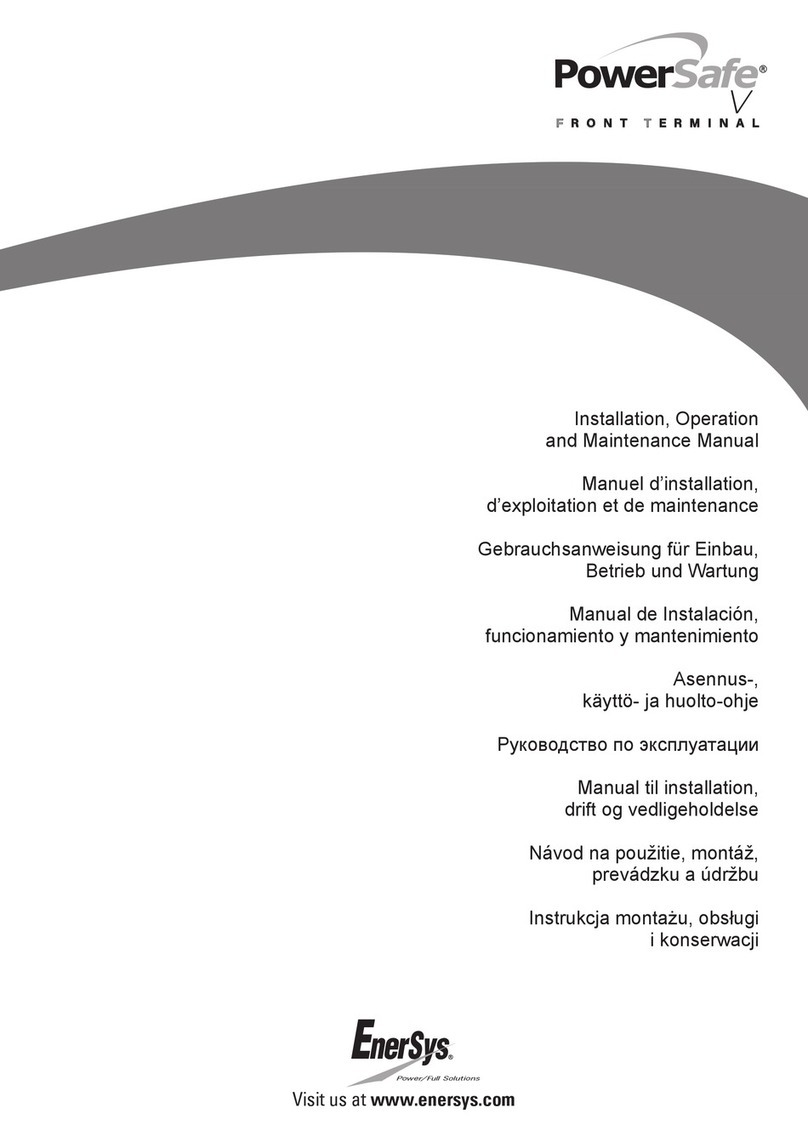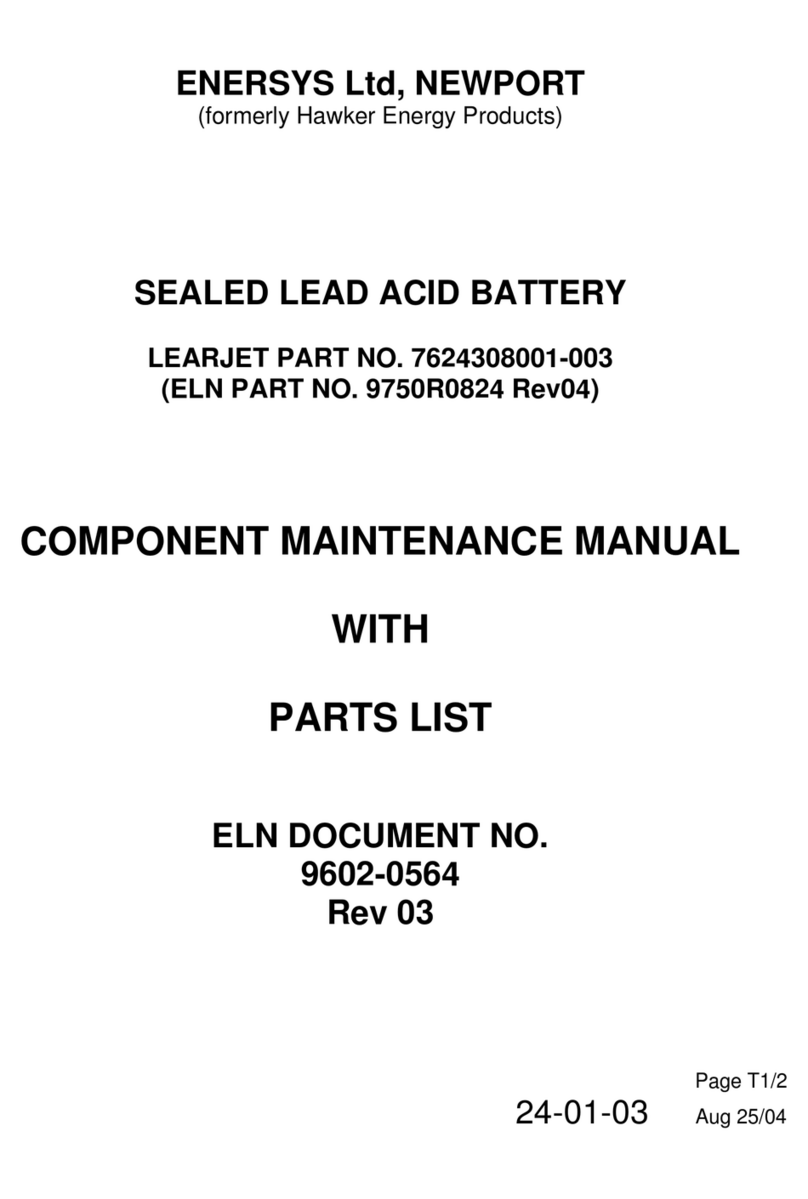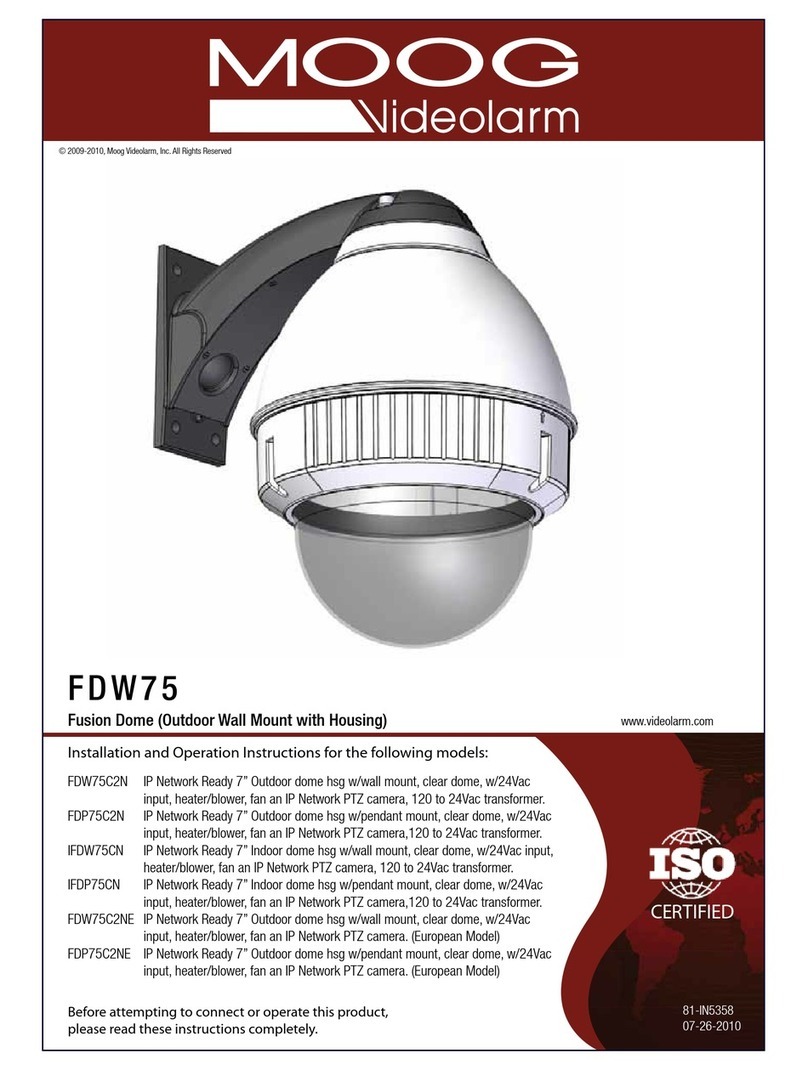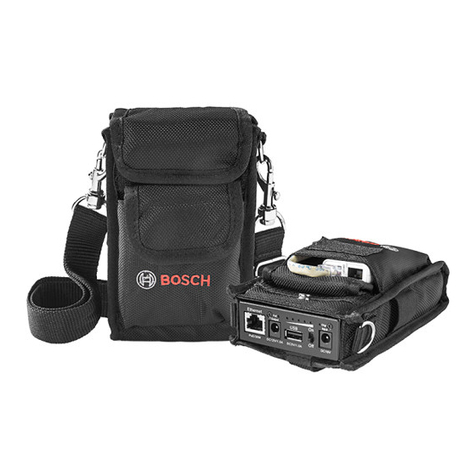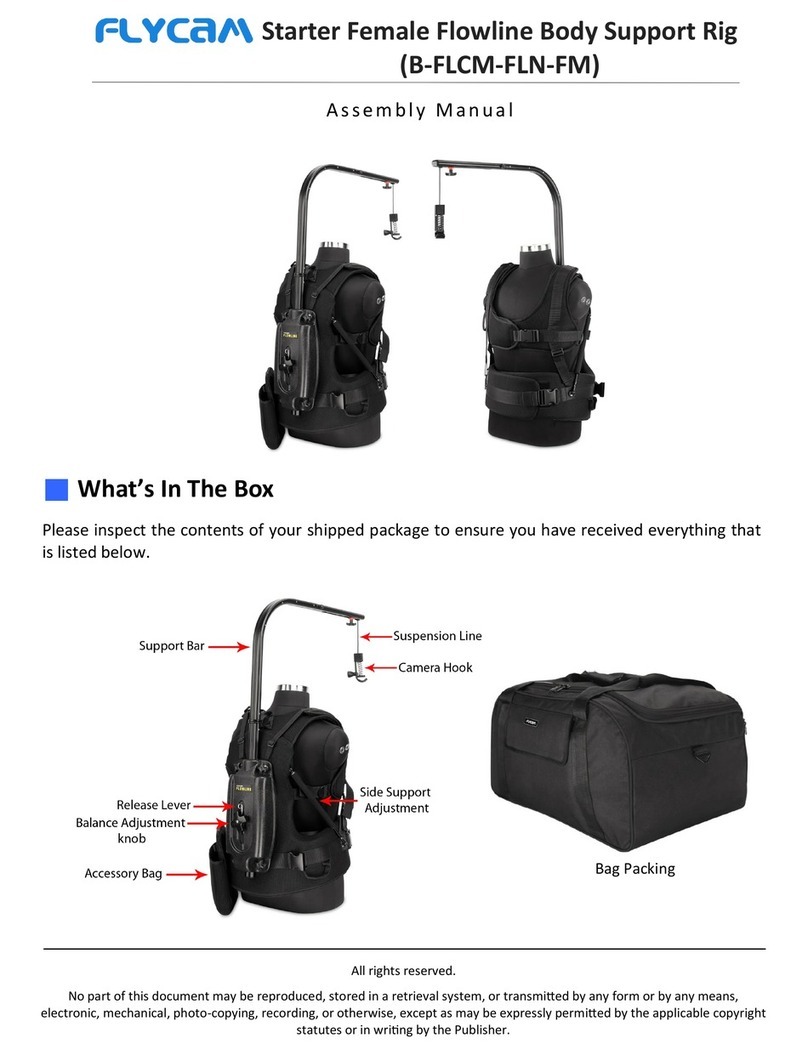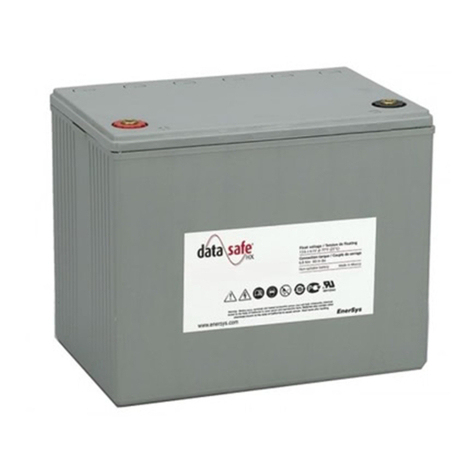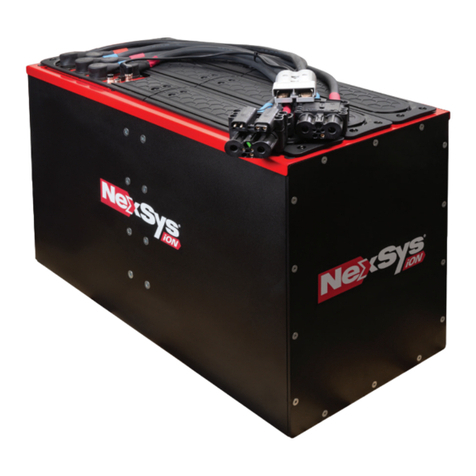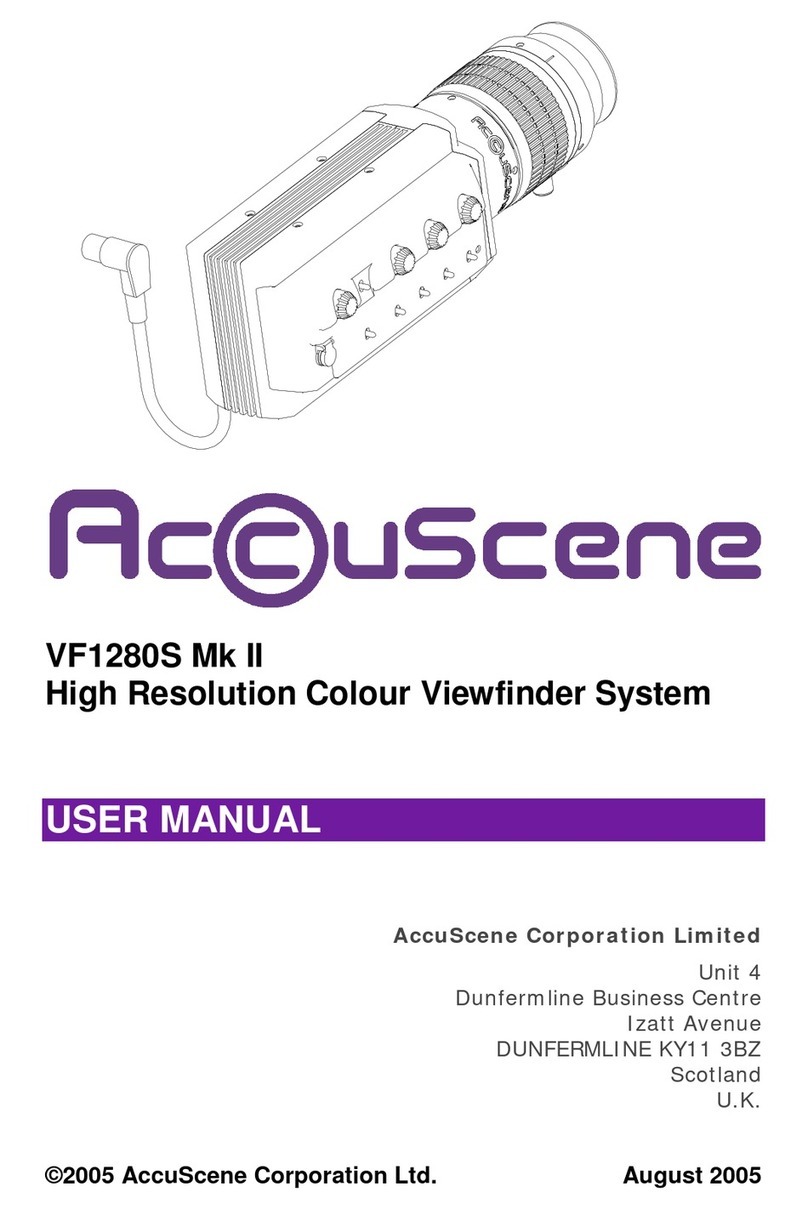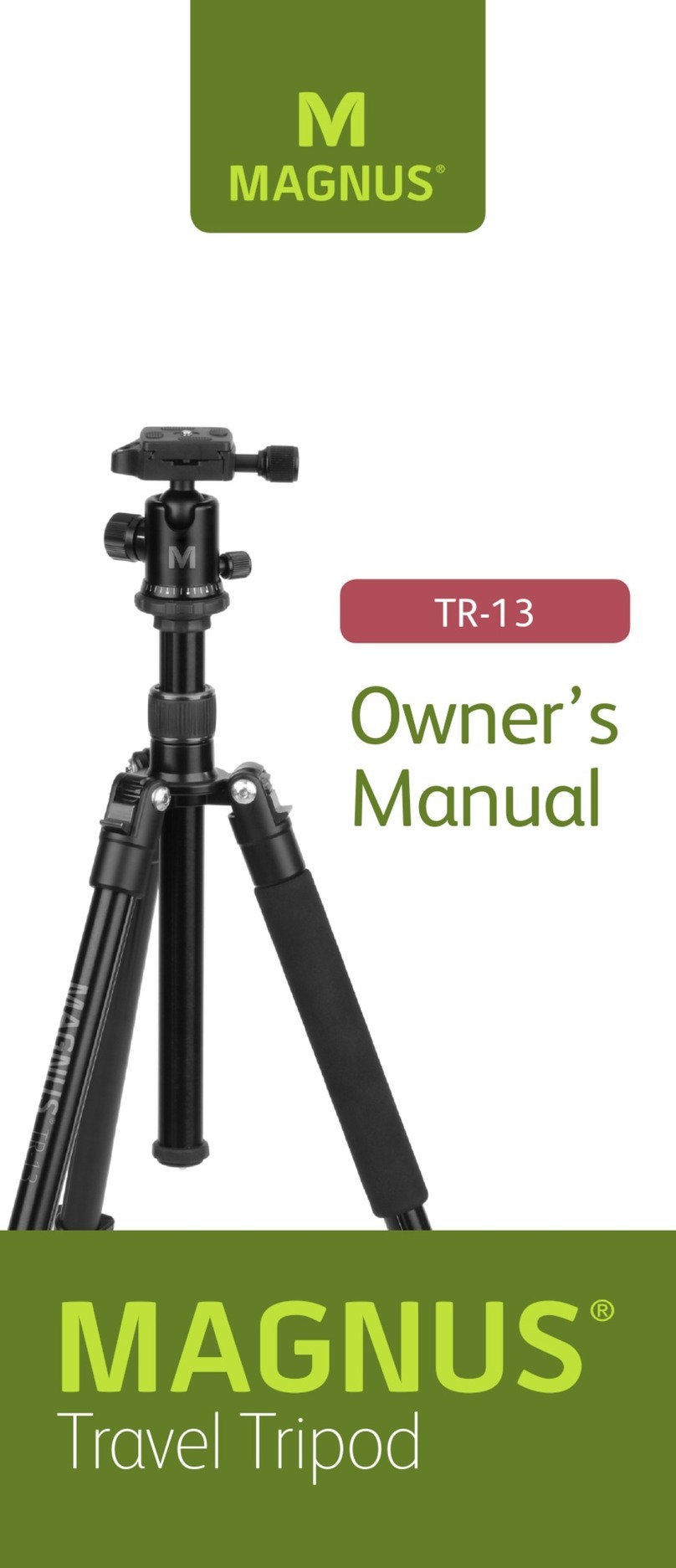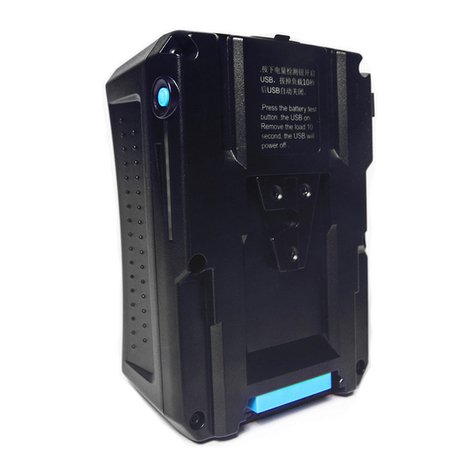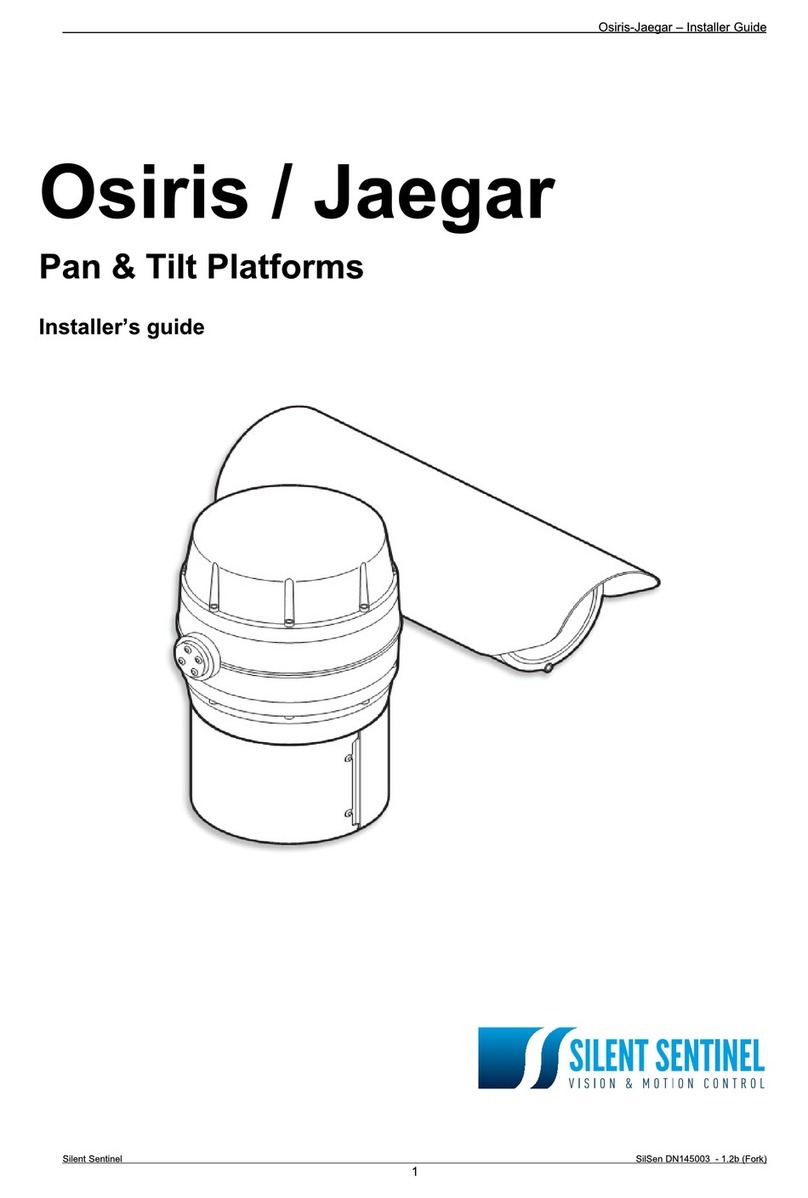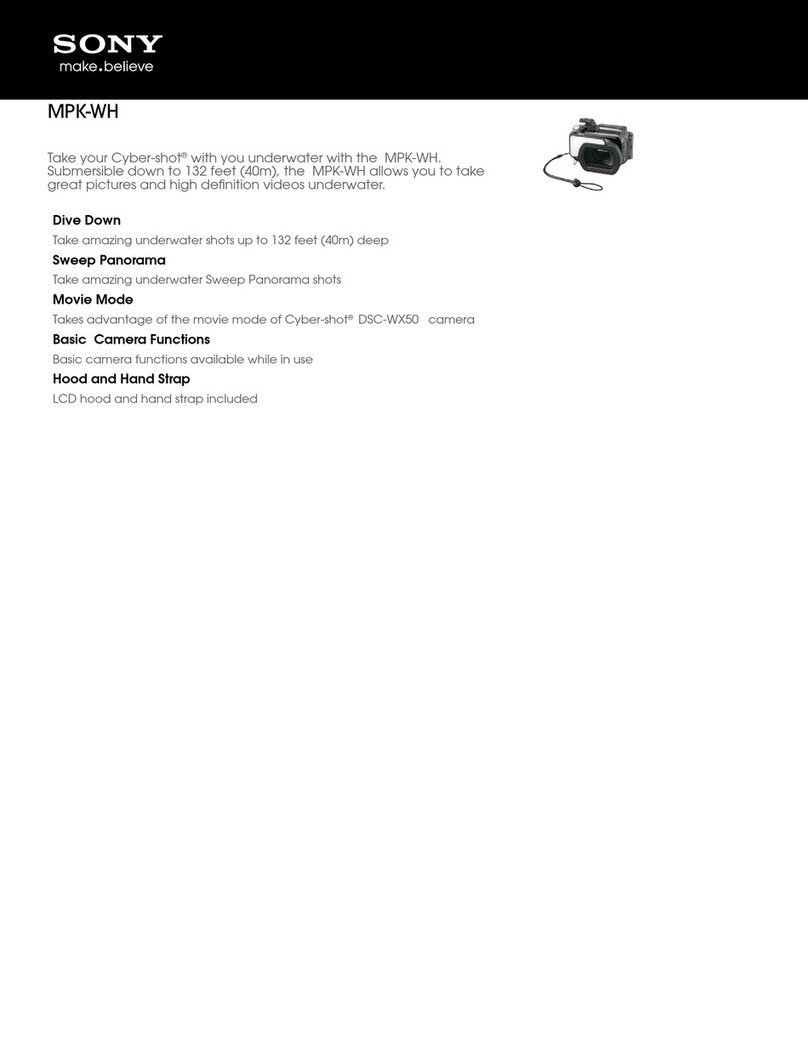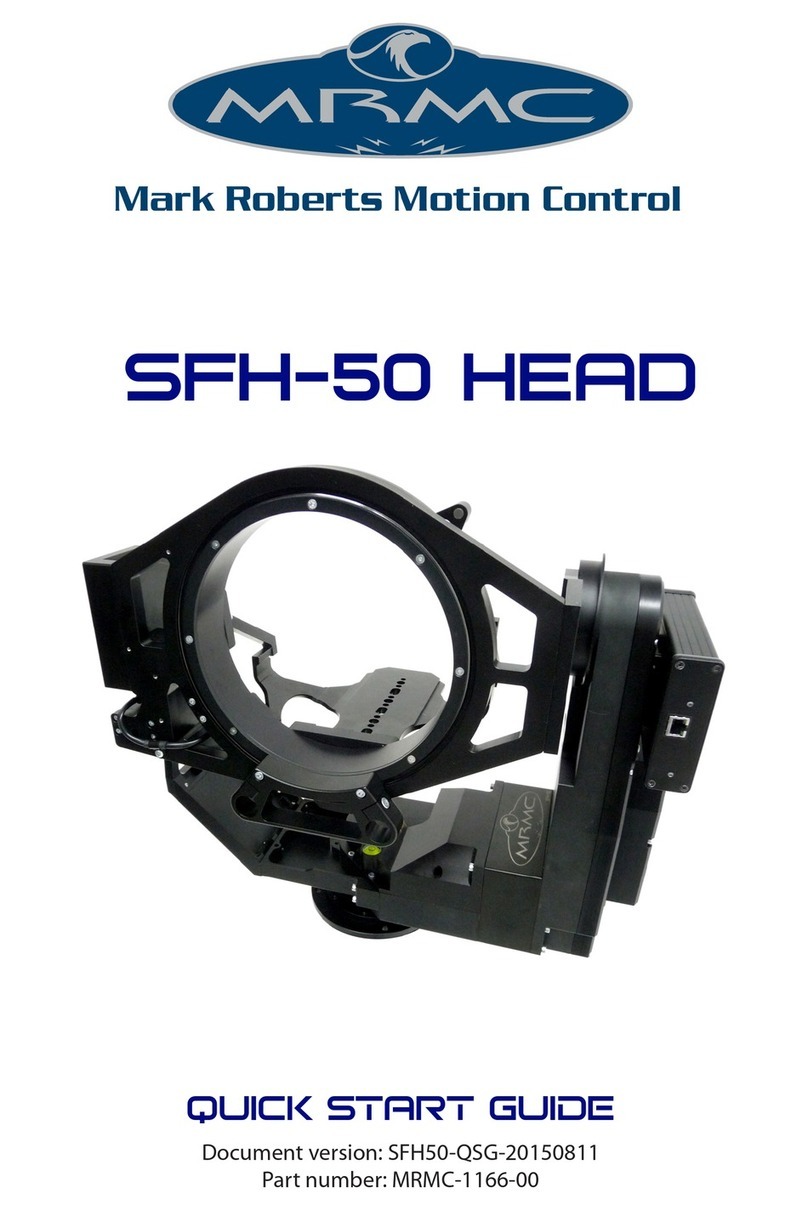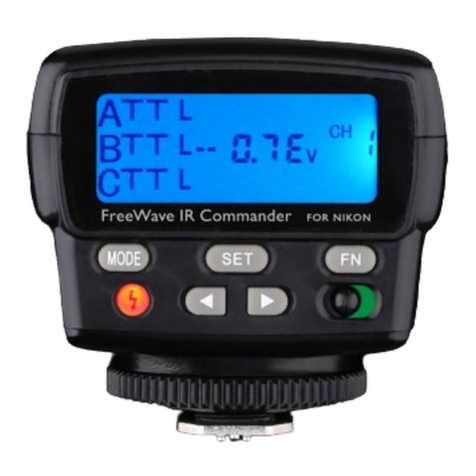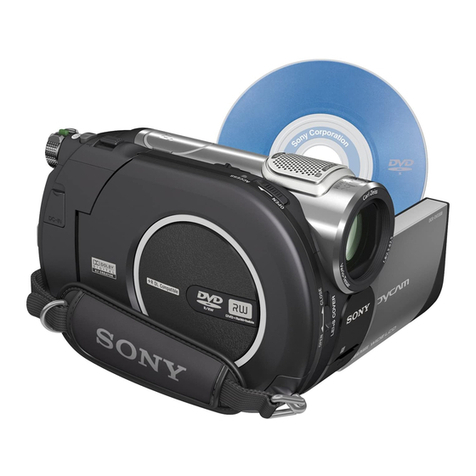
2. Cycl c Operat on
2.1 Cycl c Performance
PowerSafe OPzV technology in hybrid application with daily cycle
needs to be recharged at 2.40Vpc (at 20°C). This voltage should not
be maintained continuously for more than 24h.
The preferred recharge regime returns OPzV technology to full state
of charge prior to commencement of the next discharge cycle.
Operating at partial state of charge will be considered on a case by
case basis but caution is advised with this type of regime as the
available cycle life (compared to full state of charge) will be reduced.
The graph below shows the cyclic capability of PowerSafe OPzV
products.
Operating at temperatures >+20°C will reduce the available number
of cycles. The graph below illustrates the effect of derating as a
function of temperature.
2.2 D scharg ng
In order to correctly control the depth of discharge during the
discharge phase, it is necessary to count the discharged Ah with an
instrument capable of +/-1% accuracy across the full range of
anticipated discharge currents in service.
Although published tables of discharge characteristics show end
voltages down to 1.60 volts per cell, the voltage values shown in the
next graph are recommended as the end of discharge voltage relative
to discharge rate, in order to avoid any over-discharge of the battery.
0
500
1000
1500
2000
2500
3000
3500
4000
4500
5000
5500
6000
6500
7000
7500
8000
8500
9000
9500
10000
10500
11000
11500
12000
10 20 30 40 50 60 70 80
Number of Cycles
Depth of Discharge (%)
Number of Cycles versus Depth of Discharge
0.00
0.10
0.20
0.30
0.40
0.50
0.60
0.70
0.80
0.90
1.00
1.10
25 30 35 4045 50
Derating Factor
Temperature (°C)
Derating Factor for Number of Cycles versus Average Cell Temperature
15 20
For the understanding of this guide, a “Hybrid” application is
characterised as one where the battery is continuously charged and
discharged in a controlled cycle.
A typical example would be:-
• A 12 hour cycle where both the load is supplied and the battery is
recharged by a generator,
• Followed by: 12 hours without generator power, where the battery
supplies the load.
1. General Operat ng Instruct ons
1.1 Operat ng Temperature Range
The recommended operating temperature range for PowerSafe OPzV
technology in hybrid applications is -10°C to +35°C. Optimum life and
performance are achieved at +20°C.
In hybr d appl cat ons t s mportant that the max mum battery
temperature does not exceed +35°C and that the l fet me average
temperature does not exceed +30°C.
1.2 Storage
PowerSafe OPzV technology has a shelf life of 12 months when
stored at +20°C (6 months at +30°C). Higher temperatures increase
the rate of self-discharge and reduce storage life.
1.3 Freshen ng Charge
PowerSafe OPzV batteries must be given a refreshing charge:
(a) When the maximum storage time is reached or
(b) When the OCV approaches 2.07Volts/cell, whichever occurs first.
The refreshing charge should be conducted using constant voltage
(adjusted to the temperature) e.g. 2.25Vpc at 20°C with 0.4 - 1.0
C10Amps current limit for a minimum period of 96 hours.
Alternatively, a refresh charge can be conducted using an applied
constant voltage of 2.40Vpc at 20-25°C for 24-4 h maximum.
The maximum storage times between refresh charge and
recommended OCV audit frequency is given in the table below.
Temperature Storage T me OCV Aud t Interval
(°C / °F) (Months) (Months)
+20 / +6 12 6
+30 / + 6 6 3
+40 / +104 3 1.5
1.4 Comm ss on ng
Prior to commencement of cyclic duty, the battery must be given a
commissioning recharge. This shall consist of an applied constant
voltage equivalent to 2.40 Volts/cell for a period of 24 hours.
1.5 Current L m t
The current limit range should be between 0.1 to 0.4C10 A.
1.6 D sposal
Lead-acid PowerSafe OPzV batteries are recyclable. End of life
batteries must be packaged and transported according to prevailing
transportation rules and regulations. End of life batteries must be
disposed of in compliance with local and national laws by a licensed
battery recycler.
Hybr d Appl cat on - Def n t on
15000
14500
14000
13500
13000
12500
12000
11500
11000
10500
10000
9500
9000
8500
8000
7500
7000
6500
6000
5500
5000
4500
4000
3500
3000
2500
2000
1500
1000
500
0
10 20 30 40 50 60 70 80
